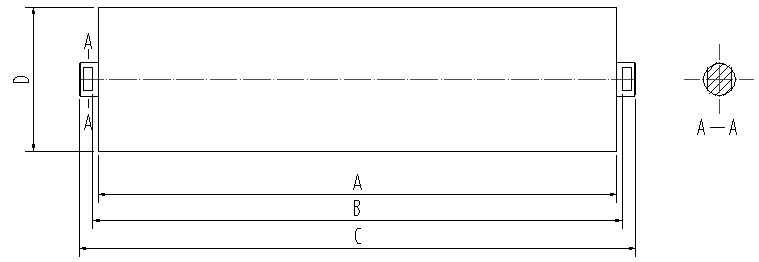 Afrikaans
Afrikaans  Albanian
Albanian  Amharic
Amharic  Arabic
Arabic  Armenian
Armenian  Azerbaijani
Azerbaijani  Basque
Basque  Belarusian
Belarusian  Bengali
Bengali  Bosnian
Bosnian  Bulgarian
Bulgarian  Catalan
Catalan  Cebuano
Cebuano  Corsican
Corsican  Croatian
Croatian  Czech
Czech  Danish
Danish  Dutch
Dutch  English
English  Esperanto
Esperanto  Estonian
Estonian  Finnish
Finnish  French
French  Frisian
Frisian  Galician
Galician  Georgian
Georgian  German
German  Greek
Greek  Gujarati
Gujarati  Haitian Creole
Haitian Creole  hausa
hausa  hawaiian
hawaiian  Hebrew
Hebrew  Hindi
Hindi  Miao
Miao  Hungarian
Hungarian  Icelandic
Icelandic  igbo
igbo  Indonesian
Indonesian  irish
irish  Italian
Italian  Japanese
Japanese  Javanese
Javanese  Kannada
Kannada  kazakh
kazakh  Khmer
Khmer  Rwandese
Rwandese  Korean
Korean  Kurdish
Kurdish  Kyrgyz
Kyrgyz  Lao
Lao  Latin
Latin  Latvian
Latvian  Lithuanian
Lithuanian  Luxembourgish
Luxembourgish  Macedonian
Macedonian  Malgashi
Malgashi  Malay
Malay  Malayalam
Malayalam  Maltese
Maltese  Maori
Maori  Marathi
Marathi  Mongolian
Mongolian  Myanmar
Myanmar  Nepali
Nepali  Norwegian
Norwegian  Norwegian
Norwegian  Occitan
Occitan  Pashto
Pashto  Persian
Persian  Polish
Polish  Portuguese
Portuguese  Punjabi
Punjabi  Romanian
Romanian  Russian
Russian  Samoan
Samoan  Scottish Gaelic
Scottish Gaelic  Serbian
Serbian  Sesotho
Sesotho  Shona
Shona  Sindhi
Sindhi  Sinhala
Sinhala  Slovak
Slovak  Slovenian
Slovenian  Somali
Somali  Spanish
Spanish  Sundanese
Sundanese  Swahili
Swahili  Swedish
Swedish  Tagalog
Tagalog  Tajik
Tajik  Tamil
Tamil  Tatar
Tatar  Telugu
Telugu  Thai
Thai  Turkish
Turkish  Turkmen
Turkmen  Ukrainian
Ukrainian  Urdu
Urdu  Uighur
Uighur  Uzbek
Uzbek  Vietnamese
Vietnamese  Welsh
Welsh  Bantu
Bantu  Yiddish
Yiddish  Yoruba
Yoruba  Zulu
Zulu types of idler in belt conveyor
Types of Idlers in Belt Conveyors
Belt conveyors have become an indispensable part of material handling systems across various industries, ranging from mining to manufacturing. A critical component of these systems is the idler, which supports the conveyor belt and helps maintain its alignment and tension during operation. Understanding the different types of idlers is essential for optimizing conveyor performance and longevity.
1. Carrying Idlers
Carrying idlers are positioned along the conveyor to support the weight of the conveyed material. They are typically spaced evenly throughout the length of the conveyor and are designed to handle heavy loads. The most common configuration includes three rolls arranged in a triangular shape, which minimizes friction and supports the belt effectively. Carrying idlers are often used in both flat and trough configurations, with the latter being more prevalent in bulk material handling applications to contain spillage.
2. Return Idlers
Return idlers are located on the return side of the conveyor belt, and they play a crucial role in keeping the belt taut during its return journey. These idlers typically have a single roller design, which allows for a reduced friction path. Return idlers can also help clean the belt by shedding materials that may have adhered to it during transportation. Proper design and maintenance of return idlers are crucial for ensuring the efficient operation of the conveyor system.
types of idler in belt conveyor

Impact idlers are specifically designed to absorb the shock when heavy materials are loaded onto the conveyor belt. These idlers have a reinforced structure that helps reduce belt damage and prolongs the lifespan of both the belt and the idler itself. By distributing the impact load over a larger area, impact idlers minimize stress on the belt, making them essential in applications where heavy or abrasive materials are involved.
4. Training Idlers
Training idlers are used to help maintain the alignment of the conveyor belt. Misalignment can lead to increased wear on the belt and idlers, as well as material spillage. Training idlers typically feature a conical shape or an adjustable angle to guide the belt back to its intended path. Correctly positioned training idlers can significantly enhance the performance of the conveyor system, reducing operational downtime and maintenance costs.
5. Self-Aligning Idlers
Self-aligning idlers represent an advanced solution for belt tracking. These idlers are designed with a unique roller configuration that automatically adjusts to the belt's position. This feature minimizes the need for manual adjustments and ensures consistent belt alignment, which is crucial for efficient material handling. By maintaining proper alignment, self-aligning idlers help increase the operational efficiency and lifespan of the conveyor system.
Conclusion
Understanding the various types of idlers in belt conveyors is vital for selecting the appropriate components for specific applications. Carrying, return, impact, training, and self-aligning idlers each serve unique purposes that contribute to the overall effectiveness and longevity of conveyor systems. By choosing the right type of idler, industries can maximize productivity, minimize maintenance costs, and ensure the smooth operation of their material handling processes.
-
Revolutionizing Conveyor Reliability with Advanced Rubber Lagging PulleysNewsJul.22,2025
-
Powering Precision and Durability with Expert Manufacturers of Conveyor ComponentsNewsJul.22,2025
-
Optimizing Conveyor Systems with Advanced Conveyor AccessoriesNewsJul.22,2025
-
Maximize Conveyor Efficiency with Quality Conveyor Idler PulleysNewsJul.22,2025
-
Future-Proof Your Conveyor System with High-Performance Polyurethane RollerNewsJul.22,2025
-
Driving Efficiency Forward with Quality Idlers and RollersNewsJul.22,2025





























